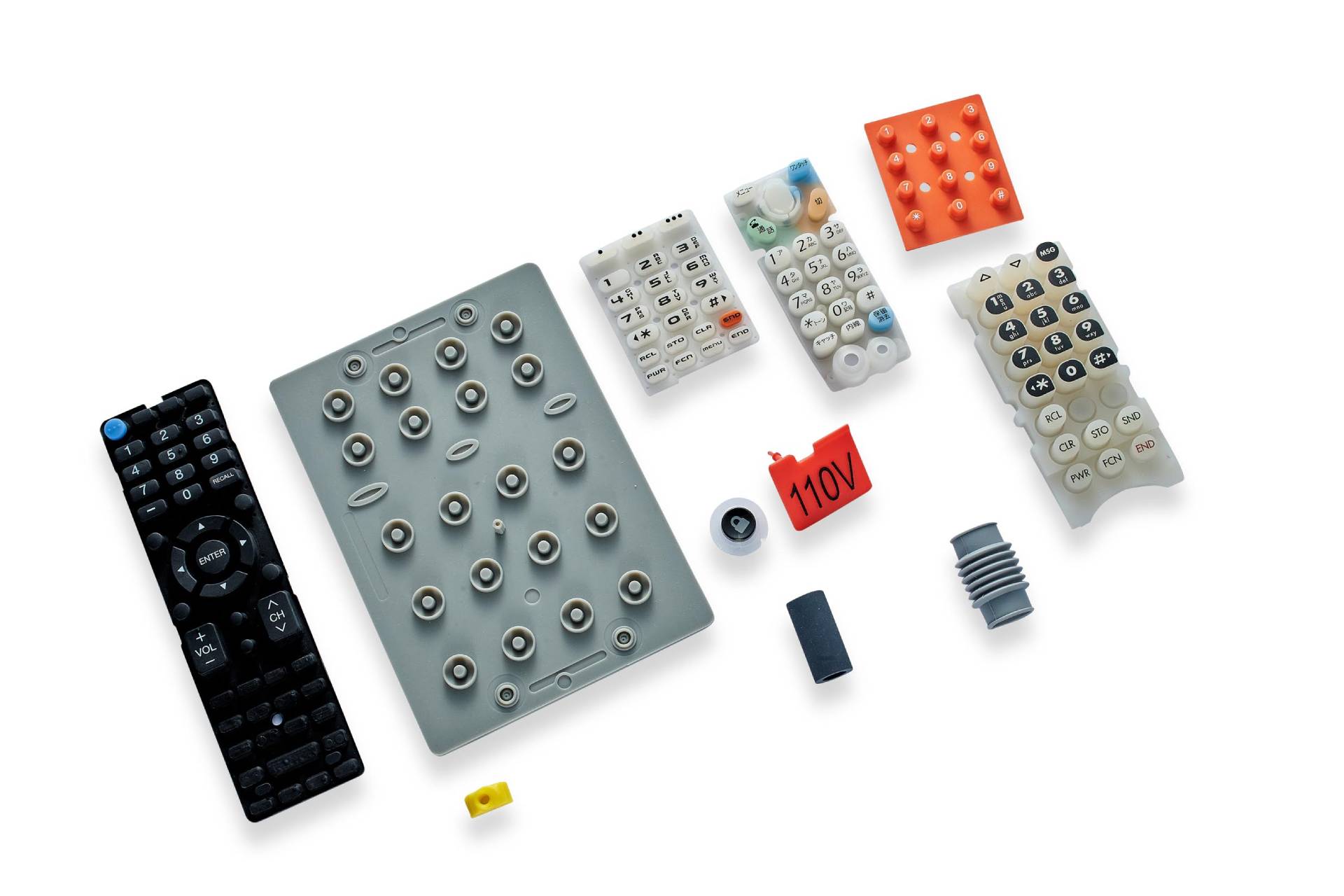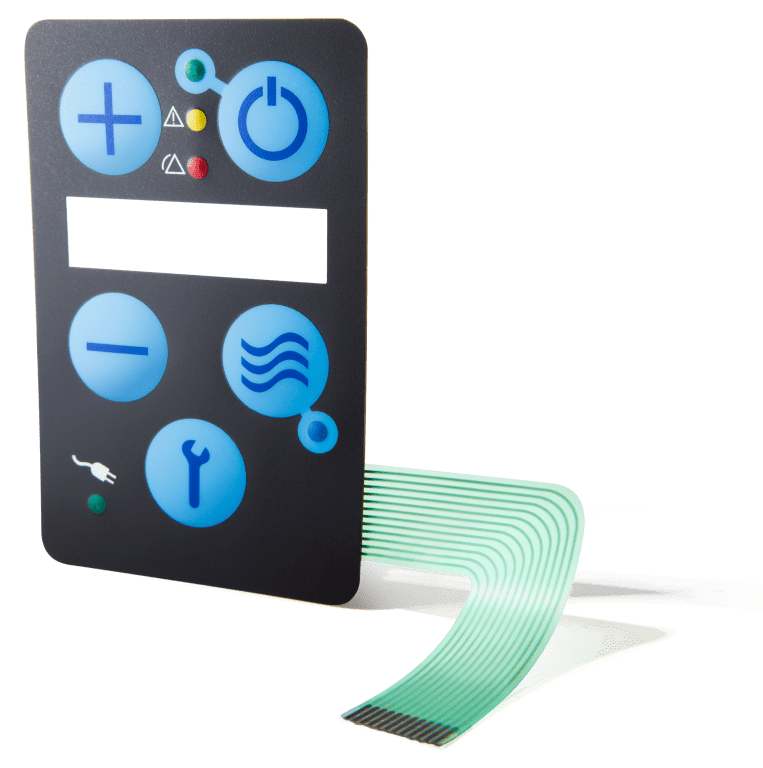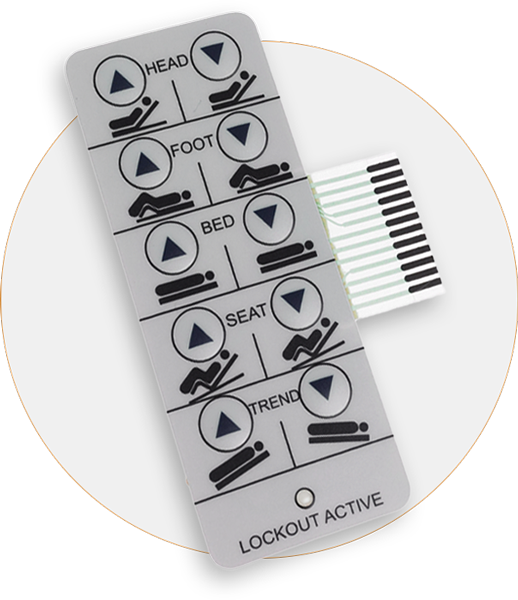Proven Membrane Switch Manufacturer for Premium Control Panels
Just How Membrane Switch Technology Works and Its Role in Interface Design
Membrane button innovation is a sophisticated approach that combines split materials for touch-sensitive input. Its layout includes visuals overlays, conductive layers, and sticky components that communicate when pushed. This communication not just finishes an electrical circuit however additionally affects the total individual experience. Comprehending the details of this innovation exposes its substantial influence on interface design, prompting questions regarding its applications and future developments in various industries.
Comprehending Membrane Switch Modern Technology
Membrane switch technology functions as a pivotal element in modern-day user interface design. This innovation integrates visuals overlays, touch-sensitive membranes, and circuit layers to produce a small, trusted input technique for different tools. The layout usually contains several layers, including a printed graphic layer that permits users to communicate with the gadget via responsive responses. Membrane switches are known for their longevity, resistance to wetness, and ease of cleaning, making them appropriate for atmospheres where standard mechanical buttons may stop working. Their low-profile style enables smooth integration right into tools, contributing to a sleek look. Furthermore, Membrane switches can be tailored with numerous shades, appearances, and icons, enhancing individual experience and visual charm. This versatility makes them prominent in consumer electronic devices, medical gadgets, and commercial controls, where user-friendly communication is important. Generally, Membrane button technology stands for a substantial improvement in how customers involve with digital user interfaces.
Trick Parts of Membrane Changes
Membrane changes include several vital components that add to their functionality and design. The conductive layer products, adhesive and assistance layers, and visuals overlay style each play an essential function in guaranteeing ideal efficiency and individual interaction. Recognizing these components is essential for efficient individual interface layout.
Conductive Layer Materials
Conductive layer products play an essential duty in the capability and dependability of Membrane buttons. These products are accountable for completing electric circuits when pressure is used to the button. Usually, a mix of conductive inks, such as silver or carbon, is used to produce these layers. Silver conductive ink is favored for its exceptional conductivity and toughness, while carbon ink is typically utilized for affordable applications. The selection of product impacts not just the electric performance but also the overall life-span of the switch. Furthermore, the density and make-up of conductive layers can influence tactile comments and switch actuation. Selecting the suitable conductive product is important for making certain ideal performance in diverse interface applications.
Glue and Assistance Layers
Adhesive and assistance layers are essential components that add to the structural integrity and capability of Membrane buttons. These layers offer a durable foundation, making certain that the numerous aspects of the Membrane button stay securely bonded and correctly straightened throughout their functional life. The sticky layer promotes the attachment of the button to the underlying surface area, offering toughness versus environmental elements such as moisture, temperature level variants, and mechanical anxiety. Meanwhile, assistance layers boost the switch's strength, protecting against deformation throughout usage and adding to a consistent responsive action. With each other, these parts play an important role in keeping the efficiency and long life of Membrane buttons, eventually affecting the total individual experience in user interface design.
Graphic Overlay Design
Although typically overlooked, visuals overlay design plays an essential role in the functionality and visual appeals of Membrane switches. This layout primarily offers as the user interface between the user and the electronics, providing both visual appeal and operational quality. Reliable visuals overlays make use of color, typography, and icons to direct customers in recognizing and navigating controls gadget functions. The choice of materials influences resilience and tactile responses, making certain the overlay holds up against wear while keeping a pleasant customer experience. Furthermore, precise positioning of the overlay with the underlying elements is crucial for excellent performance. To conclude, thoughtful visuals overlay design boosts usability, contributes to brand identity, and eventually affects individual contentment in tools using Membrane button technology.
The Production Process of Membrane Switches Over
The manufacturing procedure of Membrane changes includes several critical actions that assure performance and toughness. A visuals overlay is developed, incorporating customer interface aspects and branding. This overlay is printed onto an adaptable substratum, usually polyester or polycarbonate, utilizing precision printing strategies to identify quality and color accuracy.Next, sticky layers are used, adhered to by the assimilation of conductive traces, usually made from silver or carbon, which are crucial for electrical connectivity. These traces are etched or screen-printed onto a separate layer. After this, a spacer layer is added to develop the needed gap in between the overlay and the circuit layer, allowing for tactile comments when activated.Finally, the parts are set up and tested for quality control, guaranteeing that each Membrane button satisfies the required specs for performance and dependability. This careful process results in a durable product fit for numerous applications in interface layout.
Benefits of Using Membrane Changes

Membrane changes deal numerous benefits that make them a favored choice in user interface style. One significant advantage is their lightweight and compact nature, enabling for structured layouts in different applications. Additionally, Membrane buttons offer a secured interface, safeguarding against dust, wetness, and pollutants, which enhances durability and reliability. They are also highly adjustable, enabling developers to produce distinct graphics and designs customized to details customer needs.Another advantage is their cost-effectiveness, as they generally require less material and labor contrasted to traditional buttons. The tactile comments of Membrane switches can be crafted to boost user experience, supplying a gratifying response without the bulk of mechanical elements. In addition, Membrane buttons can be conveniently incorporated into varied atmospheres, such as clinical gadgets, industrial devices, and consumer electronics. In general, these advantages highlight the expanding appeal of Membrane buttons in modern-day interface design.
Applications in Numerous Industries
Commonly used throughout different markets, Membrane switch modern technology has found its place in applications ranging from medical devices to customer electronic devices. In the health care industry, these buttons are essential to tools such learn the facts here now as analysis equipment and individual surveillance systems, providing durable, easy-to-clean user interfaces that endure sanitation processes. The auto industry uses Membrane buttons in control panels and control board, providing reliable operation in challenging environments.Consumer electronic devices, including home appliances and video gaming consoles, benefit from the sleek layout and customizability of Membrane buttons, enhancing user communication. Furthermore, industrial equipment utilizes these buttons for control board, making certain resistance to dust and moisture while maintaining functionality.Moreover, the aerospace and army fields utilize Membrane switches for tough applications, where integrity and efficiency are important. Generally, Membrane switch modern technology offers diverse sectors by incorporating performance, sturdiness, and aesthetic allure, making it a flexible option for modern-day interface.

Creating Interface With Membrane Changes
When designing interface with Membrane buttons, cautious consideration of both performance and aesthetics is crucial. Membrane switches provide a sleek, low-profile style that can enhance visual allure while maintaining functionality. Developers have to concentrate on button layout, making certain user-friendly positioning for simplicity of operation. The tactile feedback given by the Membrane switch is vital; it can impact individual contentment and total experience.Additionally, color and graphic elements ought to align with the brand identity, reinforcing recognition and familiarity. Selecting durable products that hold up against wear and tear is also crucial, as longevity adds to use gradually. Incorporating backlighting can improve visibility in numerous lights problems, additionally improving customer interaction. Eventually, a properly designed Membrane button user interface balances both type and function, making certain that the customer experience is both effective and interesting, meeting the needs of varied applications across markets.
Future Patterns in Membrane Switch Innovation
As Membrane button technology advances, the assimilation of wise functionalities is ending up being progressively famous. These advancements enable improved interactivity and connection within interface (membrane switch manufacturer). Furthermore, the shift towards eco-friendly materials mirrors a growing dedication to sustainability in style methods
Smart Membrane Changes

Eco-Friendly Products Use
In the middle of the advancements in Membrane switch technology, a considerable pattern is arising in the direction of using environmentally friendly products. Suppliers are progressively focusing on sustainability by integrating naturally degradable plastics and non-toxic inks, minimizing ecological effect. This change not just straightens with global ecological standards but likewise addresses customer demand for greener items. Innovations in material scientific research have actually made it possible for the growth of resilient, eco-friendly alternatives that preserve efficiency without endangering quality. These products use comparable capability to standard choices while decreasing waste and toxicity. As industries end up being more eco-conscious, the assimilation of lasting methods in Membrane button manufacturing is anticipated to increase, enhancing a commitment to ecological obligation and leading the way for even more lasting individual interface solutions in the future.
Regularly Asked Inquiries
Exactly How Do Membrane Switches Differ From Typical Mechanical Switches?
Membrane changes vary from typical mechanical buttons mainly in building and construction and procedure. They use adaptable layers visit homepage that produce a sealed user interface, whereas mechanical switches count on physical motion and contact, causing distinctive toughness and responsive comments attributes.
Can Membrane Changes Be Customized for Specific Applications?
Membrane buttons can indeed be tailored for certain applications - membrane switch manufacturer. Suppliers create them to meet one-of-a-kind requirements, allowing for tailored layouts, graphics, and performances that enhance individual communication and fit particular operational needs properly
What Is the Lifespan of a Membrane Switch?
The lifespan of a membrane layer switch typically ranges from 1 to 5 million actuations, relying important link on aspects such as worldly quality, environmental problems, and use frequency. Routine screening can help establish its durability and integrity in applications.
Are Membrane Switches Over Resistant or water resistant to Chemicals?
Membrane switches can be developed to be resistant and water-proof to chemicals, depending on the materials made use of and making processes. Appropriate securing and protective coatings boost their longevity in different environmental problems and applications.
Just How Do Membrane Switches Effect Device Energy Consumption?
Membrane switches can significantly affect tool energy consumption by making sure efficient procedure. Their low power requirements during activation aid decrease power usage, adding to longer battery life and general better effectiveness in electronic devices. Membrane buttons are recognized for their longevity, resistance to wetness, and ease of cleansing, making them suitable for atmospheres where conventional mechanical buttons might stop working. The auto sector employs Membrane switches in control panels and control panels, providing reliable operation in tough environments.Consumer electronics, including home devices and pc gaming consoles, benefit from the streamlined design and customizability of Membrane switches, enhancing individual interaction. Furthermore, industrial equipment makes use of these switches for control panels, making sure resistance to dust and wetness while preserving functionality.Moreover, the aerospace and army sectors make use of Membrane buttons for sturdy applications, where integrity and performance are vital. The evolution of Membrane switch innovation is getting in an exciting phase with the appearance of smart Membrane switches, which integrate advanced functions and capabilities. Membrane changes vary from typical mechanical switches largely in construction and procedure.